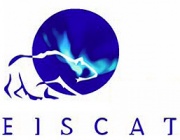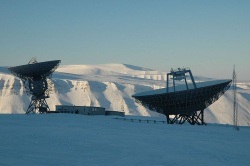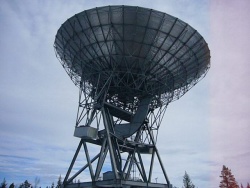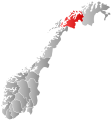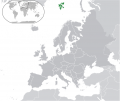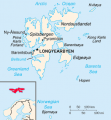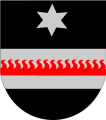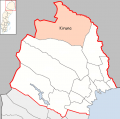EISCAT
Da Ufopedia.
(→Galleria immagini) |
(→Galleria immagini) |
||
| Riga 34: | Riga 34: | ||
Immagine:Norrbotten_lC3A4n_vapen_svg.png | Immagine:Norrbotten_lC3A4n_vapen_svg.png | ||
Immagine:Norrlandsflaggan_svg.png | Immagine:Norrlandsflaggan_svg.png | ||
| + | Immagine:Flag_of_Sweden_svg.png | ||
</gallery> | </gallery> | ||
Versione delle 13:51, 3 apr 2013
| Questa voce ha bisogno di essere tradotta. |
EISCAT is an acronym for the European Incoherent Scatter Scientific Association. It operates three incoherent scatter radar systems, at 224 MHz, 931 MHz in Northern Scandinavia and one at 500 MHz on Svalbard, used to study the interaction between the Sun and the Earth as revealed by disturbances in the ionosphere and magnetosphere. At the Ramfjordmoen facility (near Tromsø, Norway) it also operates an ionospheric heater facility, similar to HAARP. Additional receiver stations are located in Sodankylä, Finland, and Kiruna, Sweden. The EISCAT Headquarters are also located in Kiruna.
EISCAT is funded and operated by research institutes and research councils of Norway, Sweden, Finland, Japan, China, the United Kingdom and Germany.
In 2008, Doritos embarked upon an "out-of-this-world" advertising campaign, literally beaming a 30sec ad for Doritos brand tortilla chips into a solar system 42 light years away. This project is in collaboration with EISCAT Space Centre in Svalbard, Norway. The "You Make It, We'll Play It" contest chose the winning advertisement that was transmitted on June 12, 2008. The ad was beamed towards a distant star, within the Ursa Major constellation, that is orbited by planets which may harbor life.[1]
Indice |
History
In 1973 the EISCAT proposal - which was originally planned for France, Germany and the three Nordic countries seemed moribund. Then a Welshman, Granville Beynon became involved and by 1975 the agreement was signed, with the UK as a member. The proposal for UK membership had originally been turned down by the appropriate SRC committee. Beynon, however, persuaded the Board to reverse the decision of the committee and as a result of his efforts hundreds of European scientists have had the opportunity to use the world's most advanced ionospheric radar.[2]
